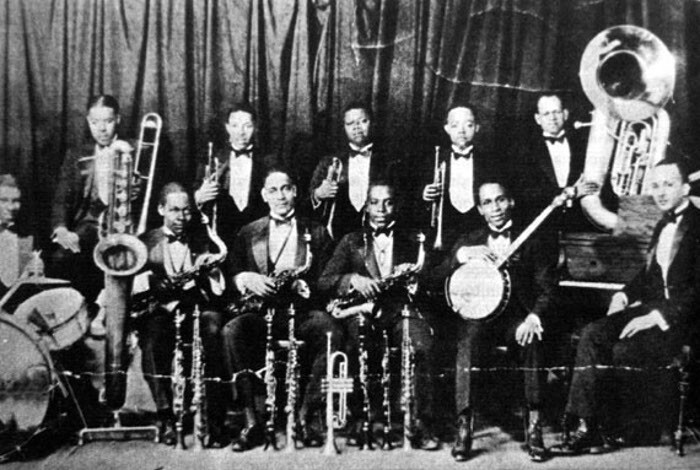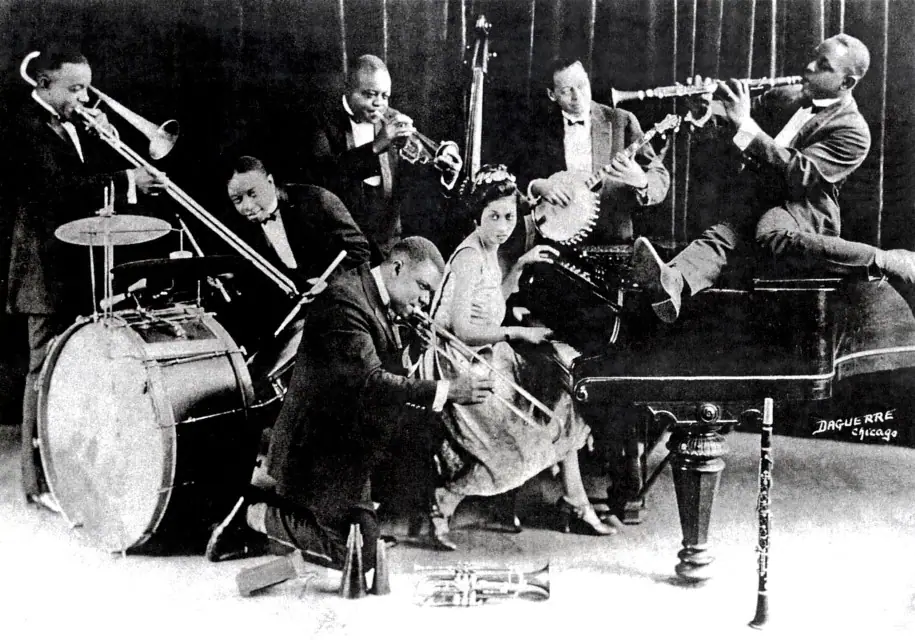In the early 20th century, a new musical style emerged that would profoundly influence American popular culture. Ragtime, with its syncopated rhythms and piano-based instrumental arrangements, became all the rage in the 1900s. Following on its heels was another new sound – jazz music. These innovative genres, with their lively tempos and creative improvisations, appealed to young audiences eager for fresh forms of entertainment.
A Contagious Musical Beat
Ragtime’s popularity spread through its use in a wildly new form of amusement – silent films. These movies relied on music for dramatic effects and setting the mood. Ragtime, with its happy melodies and steady beat, perfectly matched the madcap antics seen on screen. By accompanying silent films in theaters across the country, ragtime tunes became embedded into America’s musical consciousness.
The saucy rhythms and playful refrains of rags also made them well-suited for dance music. Ragtime found its way into dance halls patronized by a younger generation enamored by new fads. Dances like the Grizzly Bear, Bunny Hug, and Turkey Trot had young people joyfully bouncing to ragtime melodies. This combination launched the music into greater renown.
Improvisation Takes the Stage
Ragtime’s success paved the way for another burgeoning musical form – jazz. Early jazz retained ragtime’s exuberance but stretched its compositional structures. Soloists and small bands improvised around familiar melody lines, adding flares of instrumental color and rhythmic surprise. These early jazz groups brought tremendous energy and innovation to ragtime’s templates.
Jazz also expanded ragtime’s relatively narrow repertoire of piano and banjo to include trumpets, trombones, clarinets, and more. The additional brass and woodwinds gave jazz an exciting sonic vibrancy. These early jazz outfits took musical creativity in stunning new directions.

Fueling a Nightlife Renaissance
The most popular venues for America’s new music were proton clubs catering to young urbanites. These loud, boisterous establishments featured dancing to the latest jazz and ragtime numbers. Their fast tempos and showy instrumental displays established jazz as ideal dance music.
Prohibition increased the popularity of jazz clubs and dance halls. With liquor sales banned, speakeasies sprang up to quench people’s thirst for both alcohol and thrilling new musical adventures. Swing dancing to jazz and ragtime records became a hallmark of Roaring ’20s nightlife.
Ragtime and early New Orleans-style jazz thus became intrinsically linked to Prohibition-era entertainment. Venues famous for flouting temperance laws, like the Cotton Club, gave ragtime and jazz immense national exposure. Had it not been for Prohibition, these genres may not have broken through to such wide acclaim when they did.
Conclusion
The convergence of ragtime and early jazz recordings, new dances, silent film and clandestine night spots powered the phenomenal rise of these styles in popular music. Their fusion created an entire cultural movement that still resonates today. Modern musical genres fuse West African rhythmic concepts with European harmony, a formula first mastered by turn-of-the-century American ragtime and jazz artists. These vibrant building blocks of contemporary music emerged as young people sought entertainment outside the cultural mainstream of the early 1900s.

